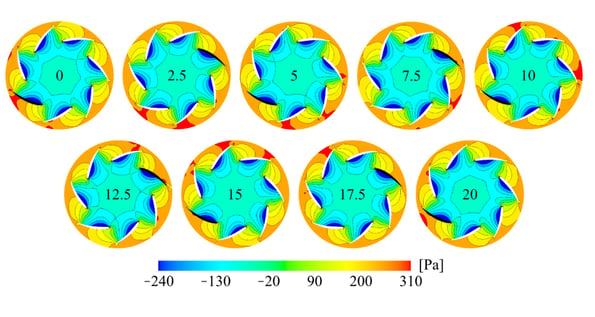Imagine you enter a building and, almost immediately, feel an indescribable discomfort. You listen and hear no noise, you breathe and find the air quality good. When you leave the building the previously felt discomfort disappears. Can the building have caused this distress? Unfortunately, yes. Recently published research has identified a possible source of the problem – it can be infrasound, inaudible noise.
The World health organization (WHO) has reported that humans have recognized certain medical symptoms after spending time in specific buildings. It is ascertained that the symptoms are linked to explicit buildings as the occupants experienced them while inside, and because they decrease or disappear after leaving the identified environment. The occupants usually experience irritation to nose and eyes, headaches, respiratory infections, fatigue, dizziness, and nausea, later known as sick building syndrome (SBS) and coined by the WHO.
SBS is used to describe a situation in which occupants of a building experience severe health- or comfort issues due to the above, and when the symptoms seem to be directly linked to the time spent in a certain indoor environment. Signs of SBS get worse the longer time spent in the particular building and get better after leaving. The general public’s top of mind explanation to SBS is usually poor air quality. However, later studies have shown that negative sound, hereafter also called noise, in comparison with other measured environmental parameters considerably to SBS.
More about sound
Generally, sound is thought of as something that can be heard. But in fact, sound is air molecules that oscillate, move around, generated by pressure fluctuations. The molecules’ movements activates the eardrum which makes the human register a sound. The human ear can detect sounds from 20 to 20,000 Hz but sound below 20 Hz is inaudible for humans and is called infrasound. Sound also affects materials, like beams and walls in a building. They can start to vibrate with the same frequency as the sound, and can even increase the sound level. This occurs when the natural frequency for the material is the same as the frequency of the sound.
The part of SBS that is related to sound, especially infrasound, is difficult to notice. It is sounds that the human ear cannot hear, it is even difficult to measure low-frequency noise in a laboratory environment. Moreover, infrasound moves through the air but it also spreads as vibrations in building materials which makes the noise particularly difficult to remove. Unfortunately then, low-frequency sound, or noise – infrasound, is the key factor that cause sick building symptoms.
Is this a problem?
SBS is fortunately a quite unusual phenomenon. The WHO has reported that 10-30% of all new buildings in the Western world have IEQ problems, but not all of them are failing to the point of being classified as buildings with SBS.
However, people in the modern part of the world spend the majority of their time indoors. Therefore indoor environmental quality (IEQ) has become an increasingly important concern. When considering IEQ, the most common parameters to think of are temperature, CO2 levels and humidity. However, it is established, and understood from the above, that sound quality also is an important factor to achieve high-quality IEQ.
The indoor environmental quality can be controlled by heating, ventilation, and air conditioning (HVAC), solutions driven by fans that control temperature, CO2 levels and humidity. However, these HVAC solutions are also known to be sources of noise. Especially fans are known to be dominant noise generators. So, what can be done?
Infrasound seems to be key
First and foremost, it is important to balance the entire fan unit and not only the impeller itself. The fan unit should also be assembled with the correct specified vibration absorbers. These measures reduce vibrations from the fan and minimises transmission to the building via the air handling unit. In addition, sound attenuators should be used throughout the duct system. This helps in many buildings, but not in all.
So, the best way to deal with the real noise issues today is to get more knowledge and understanding. A recent study denotes that the fan used in HVAC systems generates infrasound. Unsteadiness with a period of 20 fan revolutions was identified for high-pressure regions inside the fan (red regions in the figure). The rotating high-pressure regions give a peak frequency of 2.4 Hz. An inaudible low frequency, as mentioned, called infrasound.
 The red regions in the above figures are high-pressure regions inside the fan which generate a peak frequency of only 2,4 Hz, inaudible infrasound.
The red regions in the above figures are high-pressure regions inside the fan which generate a peak frequency of only 2,4 Hz, inaudible infrasound.The unevenly distributed pressure regions could be connected to the airflow through the gap between the shroud and the inlet duct. The airflow through the gap is also the main source for the frequency peak at the blade passing frequency, see our pervious expert blog post for more information.
Knowing all the above at Swegon, where we develop and manufacture our own fans, makes it possible for us to remove the infrasound and take a leap towards eliminating sick building syndrome (SBS) related to noise issues in buildings.

























.jpg?width=75&name=Image%20(5).jpg)








.jpg?width=75&name=magnus%20andersson_550x550%20(1).jpg)











.jpg?width=75&name=0%20(1).jpg)





-4.png?width=75&name=MicrosoftTeams-image%20(3)-4.png)















